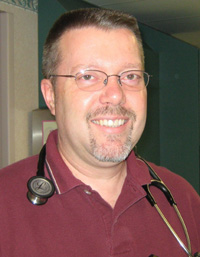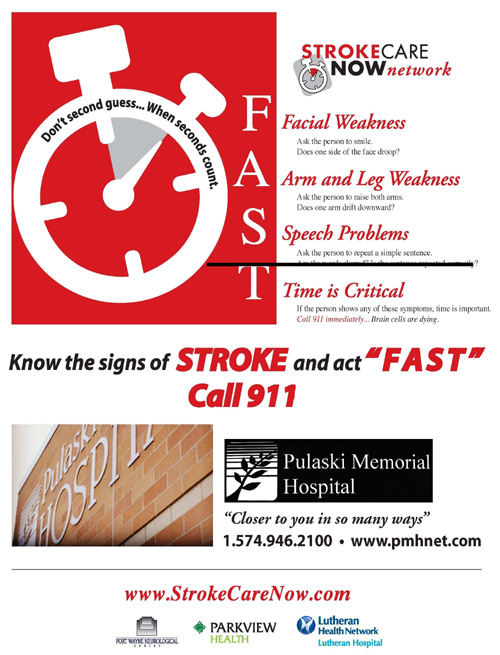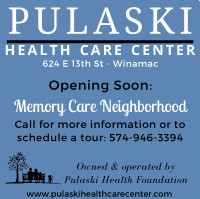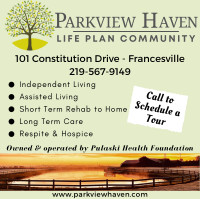“Patients suffering from stroke have three hours and in some selected cases up to 4.5 hours from symptom onset to have intravenous clot-buster medication administered that can prevent drastic neurological impairments,” said Rakesh Khatri, MD, medical director, StrokeCareNow Network, Fort Wayne Neurological Center. “Some patients have walked out without any disability when they were treated early
enough. In a significant number of cases, we can omit the transfer of patients from their nearest community facility and start intravenous clot-buster medication immediately. That makes all the difference in the outcome for stroke patients.”
Without neurology staff on-site, many of the smaller hospitals used to transfer all of these patients. Now they don’t have to leave close to home care unless it’s really necessary.
 Pulaski Memorial and other participating hospitals now use the SCNN neurologist to back-up local emergency physicians to help determine whether or not the patient is appropriate for the clot-buster medication or other treatment.
Pulaski Memorial and other participating hospitals now use the SCNN neurologist to back-up local emergency physicians to help determine whether or not the patient is appropriate for the clot-buster medication or other treatment.
The telemedicine link with specialty physicians including both neurologists and neurovascular interventionalists in Fort Wayne is on a real-time basis even while the patient is still in the Pulaski Memorial emergency room.
Doctors say a bystander can recognize a stroke and act fast to get help.
Stroke symptoms include:
- Sudden numbness or weakness in face, arm or leg, especially on one side of the body.
- Sudden confusion, trouble speaking or understanding.
- Sudden trouble seeing in one or both eyes.
- Sudden trouble walking, dizziness, loss of balance or coordination.
- Sudden, severe headache with no known cause.
"Stroke Care Now Network allows me, as an emergency room physician, to communicate directly from our emergency department through a robotic connection with the consulting neurologist at Fort Wayne in 'real
time,'" explains Brian A. Johnson, MD. "This way we can quickly decide who needs to be treated with clot
busting medications and then flown to Fort Wayne and who will need to be treated with standard treatments here at PMH. I really like the fact that the neurologists can see the digital images of the brain CT scan on their own computers also.
For more information about the SCNN, visit www.strokecarenow.com.
Pat Smith is director of media marketing at PMH. The hospital's website is www.pmhnet.com








